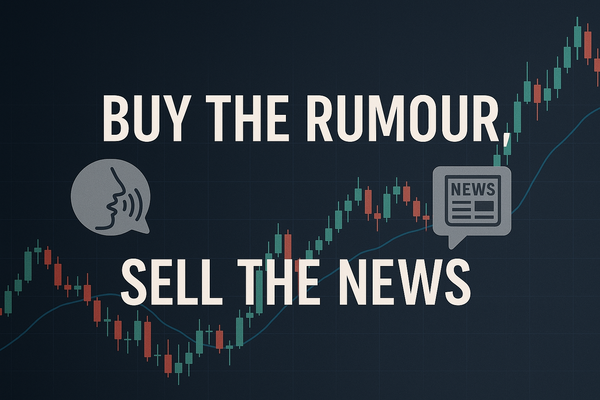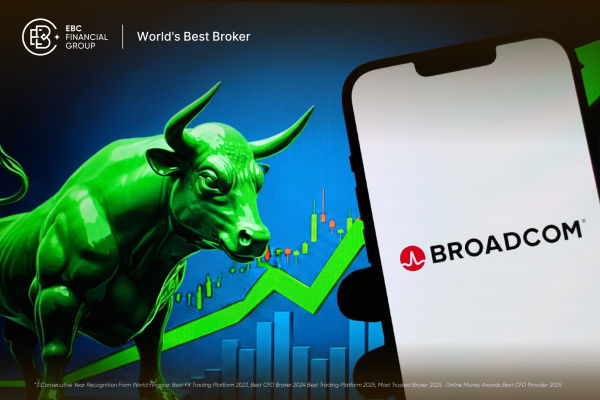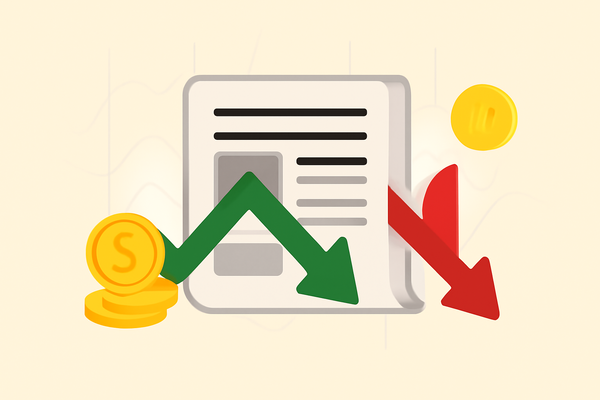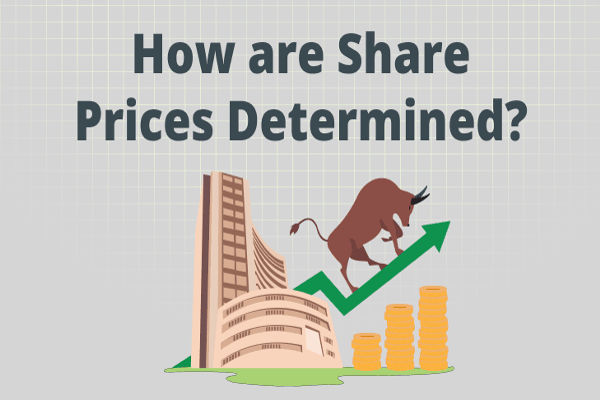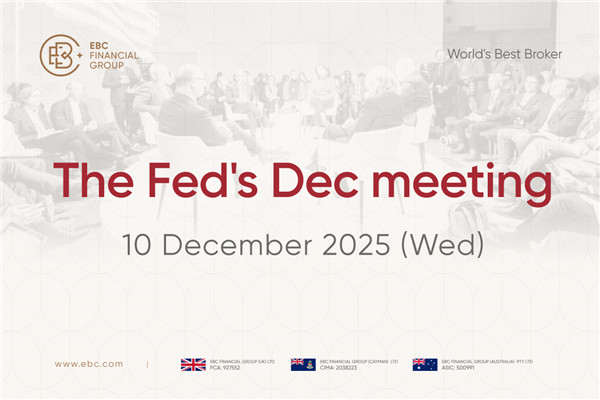In trading, the saying “buy the rumour, sell the news” isn’t just market folklore, it's a strategy built around human psychology. The idea is simple: buy an asset when traders anticipate a positive event, then sell once the news is out, often before the market reacts fully.
When done right, it can capture gains driven by speculation; done wrong, it can backfire spectacularly.
Whether you’re dipping your toes into stocks, forex, or crypto, understanding this strategy helps you ride trends while avoiding costly surprises.
What “Buy the Rumour, Sell the News” Means
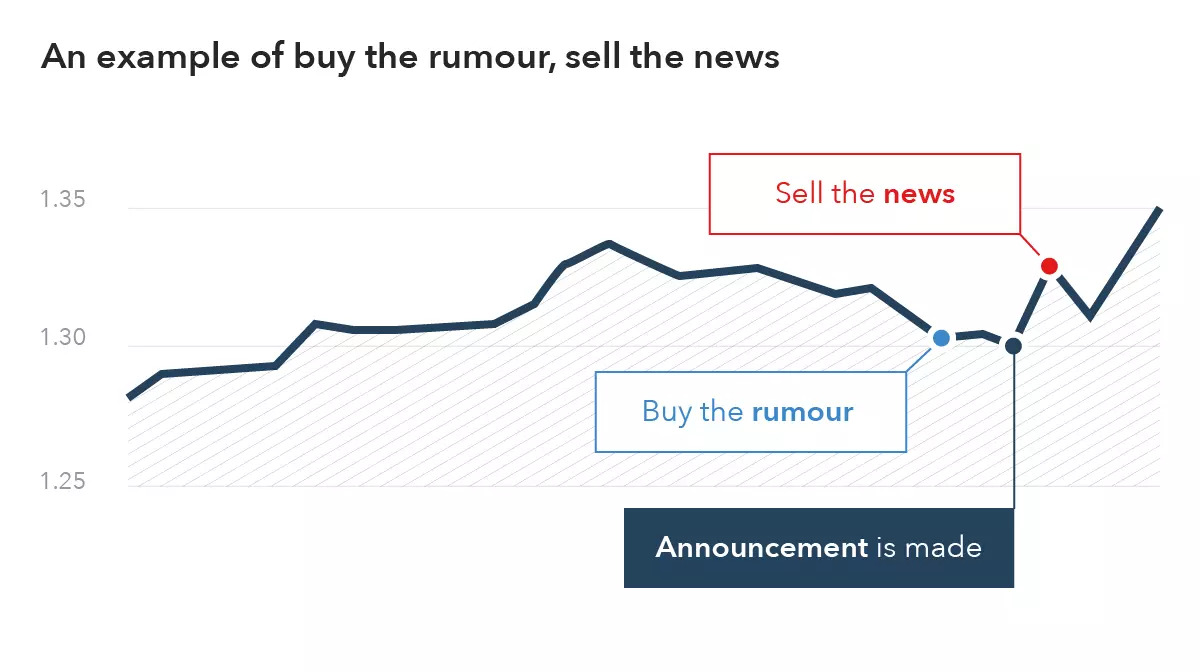
The strategy reflects how markets behave: asset prices often rise ahead of expected events, such as corporate earnings, economic data, or central bank decisions, and may decline or stall once the actual news is public.
This pattern is common across equities, forex, commodities, and cryptocurrencies.
In crypto, for example, rumours of regulatory approvals or major partnerships can spike prices before announcements, only for them to retract once details are confirmed, a classic “sell the news” event.
Comparison With Other Strategies
Traders have multiple strategies to approach the market, each with different levels of risk, reward, and timing. Understanding these differences helps put the “buy the rumour, sell the news” approach in context.
| Strategy |
Risk Level |
Reward Potential |
Timing Focus |
| Buy-and-Hold Investing |
Low |
Moderate, long-term |
Long-term, across market cycles |
| Momentum Trading |
Medium-High |
High, trend-dependent |
After trends start, short-to-medium term |
| News-Based Trading |
High |
Variable, event-driven |
Reacting post-announcement |
| Buy the Rumour, Sell the News |
Medium-High |
High if timed well |
Pre-event anticipation |
Types of Markets For This Strategy

The effectiveness of “buy the rumour, sell the news” depends on the market you trade. Equities often react sharply to earnings or corporate announcements.
Forex moves with central bank decisions and geopolitical shifts. Commodities respond to supply changes, weather, or policy updates.
Cryptocurrencies are highly volatile and sentiment-driven, making rumours spread quickly but also amplifying risk.
Understanding the market type helps traders apply the strategy more effectively.
Real World Example
The "buy the rumour, sell the news" strategy manifests clearly in many market scenarios. Here are some common examples followed by a detailed real-world case:
Corporate Earnings: Traders often buy shares ahead of anticipated strong earnings. Even if results are positive, prices can drop afterward as profits are taken or because the good news was already priced in.
Central Bank Decisions: For example, the British Pound may rally ahead of a Bank of England rate hike but weaken once the announcement is made as traders lock in gains.
Economic Data Releases: Markets often move on forecasts before key data such as employment or inflation are released, only to reverse or adjust once the actual figures are published.
Case Study
Leading up to Tesla’s Q3 2025 earnings report, there was widespread optimism about the company's performance. Analysts and investors anticipated strong results due to record vehicle deliveries, driven by a surge in demand before the expiration of the $7,500 U.S. EV tax credit.
| Metric |
Q3 2025 Result |
Analyst Expectation |
| Revenue |
$28.1 billion |
$26.4 billion |
| Net Income |
$1.4 billion |
$1.9 billion |
| Operating Margin |
5.8% |
10.8% |
| Vehicle Deliveries |
497,099 units |
462,890 units |
Despite surpassing revenue expectations, Tesla's net income fell short, and operating margins declined significantly. The stock experienced a brief uptick following the earnings release but then declined as investors digested the results and adjusted their expectations.
This illustrates how even positive news can lead to a sell-off if the market had already priced in the anticipated outcomes.
How To Use Buy the Rumour and Sell the News Strategically
“Buy the rumour, sell the news” isn’t magic but more about preparation, timing, and discipline.
Identify High-Impact Events: Target events likely to move markets, such as corporate earnings, central bank decisions, or major economic releases. Not every headline matters so just focus on what can actually influence prices.
Monitor Market Sentiment: Stay alert to both official news and market chatter. Economic calendars, reliable news sources, and even social media can signal emerging expectations before everyone else acts.
Time Your Entry and Exit: Buy before the wider market catches on, and plan your exit around the news release. Exiting too early may leave profits on the table; staying too late can invite reversals once the news is priced in.
Manage Risk: Use stop-loss orders, position sizing, and partial profit-taking to protect gains if the market moves against you unexpectedly. Treat this strategy like a calculated trade, not a gamble.
A Revision Of 2025 Data And Insights

Global markets remain active amid economic slowdowns, interest rate changes, and geopolitical tensions. U.S. equities show resilience, while investors remain watchful of volatility and central bank policies.
Sector Trends
Technology: Continues to lead growth, fueled by AI, semiconductors, and innovation.
Energy: Experiences fluctuations due to oil price swings and supply concerns.
Financials & Others: Banks, commodities, and industrials respond to policy shifts and trade updates.
Economic Indicators
Global growth is slowing slightly, with advanced economies growing modestly and emerging markets maintaining moderate expansion. Inflation trends are easing in many regions, but country-specific differences persist.
Trading Considerations
Volatility is elevated, influenced by news, earnings, and geopolitical events. Traders should watch for policy changes, interest rate moves, and major economic data releases, while managing risk through diversification and disciplined position sizing.
Frequently Asked Questions (FAQ)
1. Can I always profit from “buy the rumour, sell the news”?
No. Rumours can be wrong, and prices may behave unpredictably. Discipline is key.
2. Which markets are best suited?
Volatile markets with frequent news: stocks around earnings, forex during central bank decisions, commodities during supply updates, and crypto during major announcements.
3. How do I control emotions?
Set clear entry/exit rules, use stop-losses, avoid hype-chasing, and review trades regularly.
Final Thoughts
“Buy the rumour, sell the news” is rooted in market psychology, letting traders capitalise on expectations before events unfold. Success comes from careful timing, research, and risk management, not luck.
Volatility, sector concentration, and interest rate shifts can turn gains into losses.
Staying informed, monitoring sentiment, and planning strategic entries and exits can help traders navigate market noise more confidently in 2025.
Disclaimer: This material is for general information purposes only and is not intended as (and should not be considered to be) financial, investment or other advice on which reliance should be placed. No opinion given in the material constitutes a recommendation by EBC or the author that any particular investment, security, transaction or investment strategy is suitable for any specific person.
